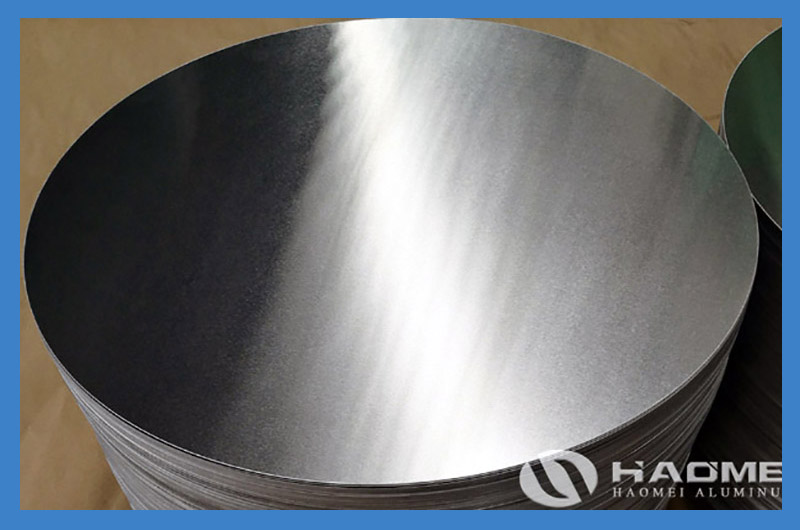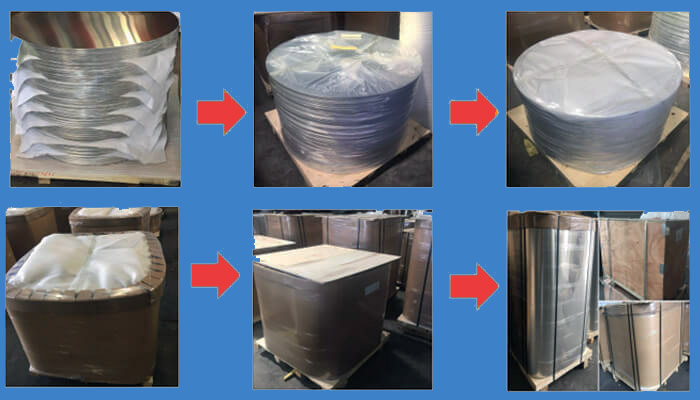Aluminum Circle for Spinning
Spinning involves clamping an aluminum circle onto a rotating mold and using tools to apply pressure, causing the aluminum blank to undergo localized plastic deformation, shaping it into the desired form.
The spinning process is commonly used to produce circular symmetric parts such as cookware, lamp shades, kitchen utensils, reflectors, and ventilation ducts. The malleability of aluminum allows it to be spun into complex shapes without cracking or losing structural integrity.
Spinning aluminum circles are typically made from cold-rolled aluminum sheets, cut from aluminum coils by a cold rolling machine, and possess excellent processing and corrosion resistance properties.

Features of Aluminum Circle for Spinning
- 1. High Ductility: Allows the circles to be easily formed into various shapes without cracking, enabling the creation of complex designs.
- 2. Structural Integrity: Even after extensive forming, the material retains its strength, which is crucial for functional components like cookware and industrial parts.
- 3. Cost-Effectiveness: Spinning produces minimal waste and can be automated, leading to cost benefits for mass production.
- 4. Smooth Surface Finish: Provides a good base for further processing such as anodizing or painting.
- 5. Durability and Long Service Life: The performance and overall lifespan of spun aluminum circles are not affected by external environmental factors.
What is the best aluminum alloy for spinning?
Haomei Aluminum is one of the manufacturers of spinning aluminum circles, and commonly used spinning aluminum alloys include 1050, 1060, 1100, and 3003.
Surface of Aluminum Circle for Spinning: Smooth, without scratches or oil stains.
Chemical compositon of different alloy Spinning aluminium circle
| Grade | Si | Fe | Cu | Mn | Mg | Cr | Ni | Zn | Al |
| 1050 | 0.25 | 0.4 | 0.05 | 0.05 | 0.05 | - | - | 0.05 | 99.5 |
| 1060 | 0.25 | 0.35 | 0.05 | 0.03 | 0.03 | - | - | 0.05 | 99.6 |
| 1070 | 0.2 | 0.25 | 0.04 | 0.03 | 0.03 | - | - | 0.04 | 99.7 |
| 1100 | Si+Fe: 0.95 | 0.05-0.2 | 0.05 | - | - | 0.1 | - | 99 | |
| 1200 | Si+Fe: 1.00 | 0.05 | 0.05 | - | - | 0.1 | 0.05 | 99 | |
| 3003 | 0.6 | 0.7 | 0.05-0.2 | 1.0-1.5 | - | - | - | 0.1 | remains |
Advantages of Haomei Spinning Aluminum Circles and Discs
- 1. Complete range of specifications for spinning aluminum circles and discs.
- 2. The surface of the aluminum disc for spinning has excellent performance, ensuring no visible scratches, oil stains, oxidation, or black spots.
- 3. The finished edges of spinning aluminum circles and discs are neat, without burrs.
- 4. Good control over the grain size and elongation rate of the coil material during the initial stage ensures excellent drawing and spinning performance of the circles, effectively avoiding potential issues in later processing.
- 5. Short production cycle, 15 days.
- 6. Secure packaging.
Applications of Spinning Aluminum Circles and Discs
Spinning aluminum circles are typically processed into lighting components rather than cookware, as the latter usually involves deep drawing.
Spinning Aluminum Circles and Discs in Lighting Fixtures
- Lamp shades and lighting housings: Aluminum circles are used to manufacture lamp shades and lighting housings, where their excellent reflective properties enhance light distribution and effects. The lightweight and machinability of aluminum allow for more flexible and diverse lighting designs.
- Reflectors: In lighting equipment, aluminum circles are used to produce reflectors that effectively reflect light, improving illumination.
Packaging of Spinning Aluminum Circles and Discs
1. Packaging Materials
Cardboard Boxes: Sturdy cardboard boxes are typically used to package aluminum circles. These boxes provide basic protection, preventing the circles from being compressed or impacted during transport.
Plastic Wrapping: Aluminum circles are usually wrapped in plastic film to protect their surfaces from dust, dirt, and moisture. Plastic wrapping also prevents direct friction between circles, reducing scratches or abrasions.
Foam Protection: Sometimes, foam pads or other cushioning materials are added to the packaging for additional protection, absorbing shocks and vibrations.
2. Packaging Methods
Single Piece Packaging: For small-sized or high-value aluminum circles, single piece packaging may be used, with each circle wrapped in a plastic bag or film and placed in a cardboard box. This method prevents direct contact between circles, reducing the risk of scratches.
Stacked Packaging: For larger quantities of aluminum circles, they are usually stacked in layers with plastic wrapping or cardboard spacers between the layers. This method saves space and ensures stability during transport.
Pallet Packaging: During transport, aluminum circles may be placed on pallets and then wrapped in plastic film. Pallet packaging facilitates forklift handling and stacking, helping to keep the circles orderly and secure.

3. Transport
Packaged aluminum circles need to be stacked properly to prevent crushing or deformation. Ensure stability during stacking and avoid placing heavy objects directly on the circles.
During transport, avoid severe vibrations and impacts, and ensure that the packaging remains intact to prevent damage to the aluminum circles.
